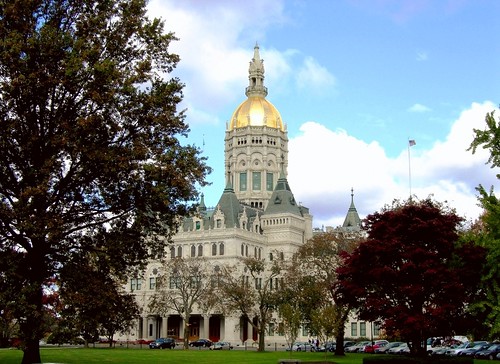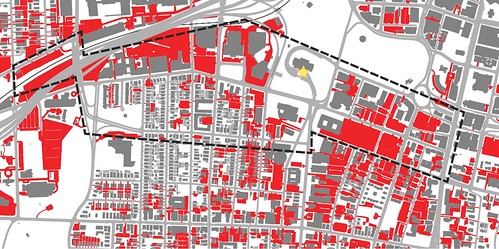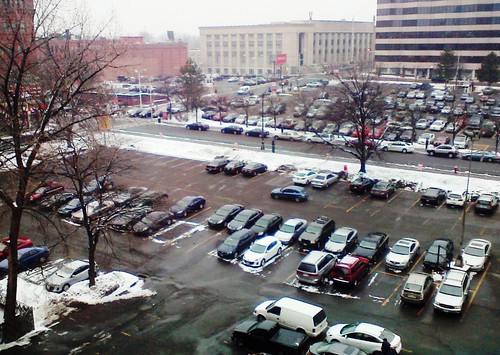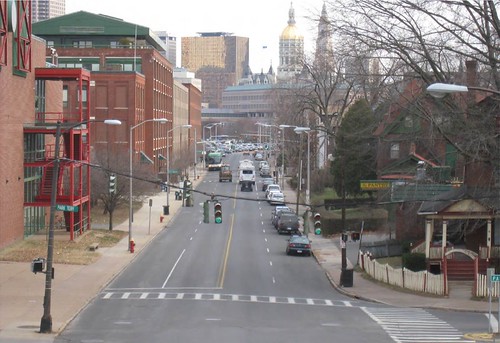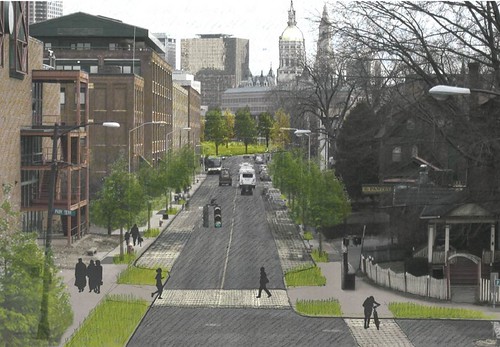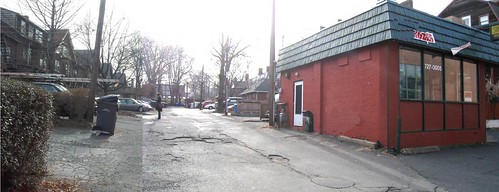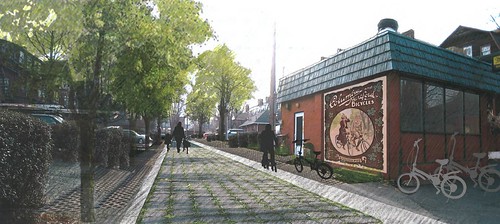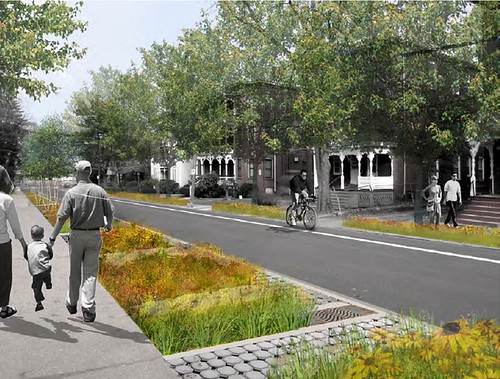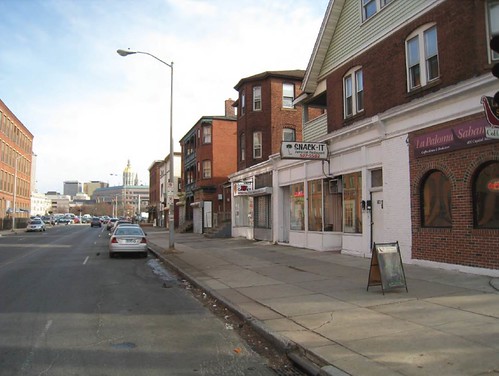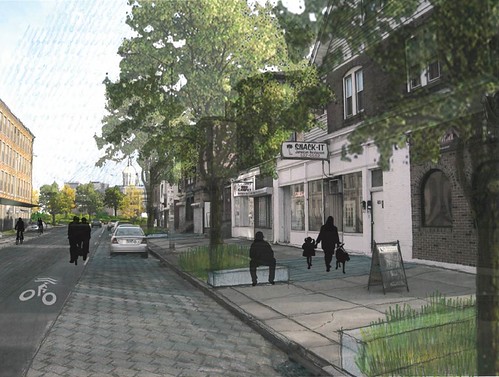Greening America's capital cities

Posted January 30, 2013 at 1:15PM
The federal Environmental Protection Agency sponsors an innovative planning program designed to help bring more green infrastructure and green building practices to our country’s state capitals, making them simultaneously more environmentally resilient and more beautiful. Implemented with EPA’s cohorts in the federal Partnership for Sustainable Communities - the Departments of Transportation and Housing and Urban Development - Greening America’s Capitals launched in 2010 and thus far has been selecting five capitals each year for design assistance. The program is not very well known but deserves to be.
The idea is that these particularly prominent communities are inevitably ambassadors of a sort for their respective states and for other cities. Indeed, elected representatives and their staffs – leaders, by definition – from all across their states work at least part-time every year in the capital cities. What they experience there, good or bad, imparts observations and lessons that can be taken back to the representatives’ home districts or even incorporated into statewide policy. There are also many visitors to state capitals for business or pleasure, each forming and taking away impressions.
I’m in the Connecticut capital of Hartford this week (where I participated with some very smart state and local leaders and civic-minded folks in a terrific forum on strong communities). While researching the local facts to prepare myself, I discovered that Hartford had been one of the five initial cities selected for the Greening America’s Capitals program. The report of the planning generated for Hartford is, in my opinion, outstanding. Much of the planning was led by the landscape architecture firm Nelson Byrd Woltz. (Not many locals know about it, and I have a concern about that. I'll get to it. But the substance of the report is impressive and important.)
See the map just above of downtown Hartford? The area inside the black lines is the study area chosen for the greening exercise. It is the prominent Capitol Avenue corridor, running east-west just south of the majestic Connecticut Capitol building. South of the Capitol, the area includes part of the wonderfully named Frog Hollow neighborhood, where the strong communities forum was held.
Now: see all the red areas on the map, both inside and outside the study zone? Those are parking lots.
As you can see, cars get a lot of land in Hartford. Partly as a result, Capitol Avenue and parts of nearby neighborhoods within the shadow of the state’s majestic Capitol building look like not enough attention has been paid there to people, or to the environment.
I don’t want to say that downtown Hartford is unattractive, exactly, or significantly less becoming than many other American cities. It includes some lovely green space, some architecture of merit, cultural institutions, and a terrific barbecue place near where I'm staying. Its good and bad points are all too typical of the northeastern US. But my hotel is literally half a block from Bushnell Park, which serves as the state’s Capitol grounds, and a quarter-mile’s walk (for most people, about five minutes) from the Capitol itself. Above is the view from my hotel window, snapped just a few minutes ago.
I know the dreary January afternoon and low-tech camera don’t flatter the scene, but still. This is steps away from the Capitol grounds. What I will unequivocally say is that all this pavement for cars in downtown Hartford isn’t doing any favors for walkability - or the watershed, as rainwater picks up pollutants and makes its way into receiving waters.
That’s where the EPA-assisted planning process, and its appropriate emphasis on green infrastructure, comes in. From the program’s 52-page final report for Hartford:
“This report provides Hartford with a new vision for Capitol Avenue that highlights existing assets and fills in missing gaps along the mile-long area of focus and into the surrounding neighborhoods. This comprehensive vision includes seven design concepts that together work to improve underused properties, integrate green infrastructure into streets and parking lots, and create new parks and public spaces. Green infrastructure is defined as working landscapes—such as bioswales, rain gardens, and bioretention meadows—that mimic natural systems by absorbing stormwater back into the ground (infiltration), using trees and other vegetation to convert it to water vapor (evapotranspiration), and using rain barrels or cisterns to capture and reuse stormwater.
"The designs offered in this report address goals identified in a public workshop, including linking nearby neighborhoods and destinations to one another, better managing stormwater, improving the pedestrian environment, and stimulating future redevelopment. The city of Hartford can use the designs proposed in this report, as well as the next steps provided, to begin to revitalize the Capitol Avenue corridor.”
Check out these great before and after scenes.
One thing I really like about the Hartford report is that it addresses not just the prominent thoroughfare but also the back alleys and neighborhood streets. While the renderings are intended, I think, just to be illustrative, they do as good a job as I’ve seen at visually conveying the impressive transformation that can be accomplished with green makeovers of what is now just pavement. I love green infrastructure because it simultaneously helps clean the watershed, brings nature into dense city neighborhoods, and cools the “heat island” effect caused by pavement (hot pavement raises summer city temperatures that lead to more energy consumed and carbon emitted for air conditioning).
Urban density is essential for a more sustainable future, especially in a city like Hartford that has so much underutilized land downtown and needs more of it. Green infrastructure makes density more appealing and more environmentally functional at the local level. This is great stuff.
And that brings me, of course, to an important caveat: planning isn’t doing. But Hartford now has a great vision for greening, at least in and around this very important corridor, and I so hope they follow through.
Now, my concern about the process followed here: I don't know anything first-hand, but I do know the forum I was invited to here in Hartford was sponsored by an organization deeply engaged in issues of community and sustainability. It operates statewide, including in Hartford, and is headquartered inside the boundary of the study area. Not only were they not approached to be engaged in the process, but they didn't even know about the study or the report until I told them. Other people I talked to in Hartford who are working one way or another on community and sustainability issues were also in the dark.
That shakes my confidence in the effectiveness of the study's community engagement process, to say the least. It also makes we wonder about the city's commitment to implement the recommendations, if people in the field aren't talking about them. And, frankly, it even makes me wonder about EPA's management of the program's grants. Someone at the agency needs to take a closer look, because this could be the case in other cities involved in the program, too: these are terrific designs and recommendations, but it's not enough to have terrific designs and recommendations if you want the program to make a real difference.
Put more positively, this is a truly excellent report that deserves to be publicized, discussed, supported by leaders and the public and, to the greatest degree possible, implemented.
All that said, I remain impressed that the Greening America’s Capitals program exists and has produced such good work. There is a lot more to it, both in Hartford and elsewhere, than I’ve been able to discuss here, so go to EPA’s website for more information and links to the full report. And then make sure the work on the ground actually gets done.
Related posts:
- The coolest green infrastructure you are likely to see (November 27, 2012)
- Mitigating the environmental paradox of smart growth: softening urban density (November 26, 2012)
- What makes a great city street? Consider these examples (September 6, 2012)
- Fixing suburbs with green streets that accommodate everyone (December 20, 2011)
- New HUD grants will help communities pursue sustainability (November 22, 2011)
- How green infrastructure is making cities more sustainable & hospitable (October 11, 2011)
- A very impressive two weeks for the federal sustainability partnership (October 22, 2010)
- Enviros should applaud NYC’s impressive new guidelines for complete, green streets (June 10, 2009)
- Smaller cities can benefit from revitalization, too (September 9, 2009)
Move your cursor over the images for credit information.
